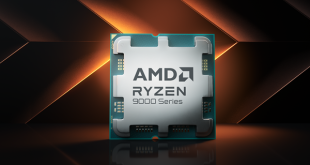In Kabini, AMD has a solid entry-level APU which tends to the needs of budget-constricted markets. Let's not get ahead of ourselves; Kabini APUs aren't going to break any speed or performance records. But they do offer a low-cost route onto the reasonable AM1 platform while offering decent all-round performance in a number of common workloads.
Performance on the CPU-side of Kabini is reasonable for the usage scenarios of entry-level users. The Jaguar cores are about 50% of the size of Kaveri's Steamroller cores and the Athlon 5350's clock speed is more-or-less 50% of the A10-7850K's. Unsurprisingly that translates the Athlon 5350's CPU performance into roughly 50% of Kaveri's in a number of tests and benchmarks.
GPU performance is where the 25W Kabini APU shows its worth. Sporting a Radeon R3 graphics system with 128 GCN cores across the Kabini range, playing less-demanding games at reduced image quality settings and a 1280 x 720 resolution is a task that the entry-level APUs are able to handle. OpenCL performance is also boosted by the comparatively strong on-chip GPU.
With its system-on-chip design, the real spice of AMD's AM1 platform is brought to the party by the Kabini APUs. SATA 6Gbps, two USB 3.0 ports, support for a discrete GPU, and four spare PCIe x1 lanes are just some of the features that make the platform an intriguing entry-level proposition. Could we see any motherboard manufacturers daring enough to make a feature-heavy board with added controllers and a pumped-up set of components?
MSI added a mini-PCIe connector to its AM1I board, while ASRock has an option with four SATA 6Gbps ports. Those two additions alone outline the AM1 platform's potential as a low-power media server. And the general compute performance of the 25W Kabini chip makes an AM1-based HTPC a tempting proposition.
Price is a key factor for the allure of the Kabini APUs and the AM1 platform. With APUs starting at less than £25 and the flagship retailing for £40, the 28nm Kabini chips offer a low-cost route onto the upgradeable DIY scene. The SoC design also helps keep motherboard prices cheap – mini-ITX and mATX parts are available for less than £25.
Overall, I see AMD's Kabini APUs as a good thing for the desktop market. They provide entry-level users with low-cost access to the build-it-yourself scene without the upgrade limitations of a non-socketed platform. And with a potential board-and-chip cost of less than £55, the AM1 platform offers an uncharacteristic number of features which could tempt users looking for a low-cost system or a secondary machine for dedicated usage scenarios.
Discuss on our Facebook page, over HERE.
Pros:
- Low-cost APUs and motherboards.
- Good range of on-chip features – SATA 6Gbps, USB 3.0, 4k resolution support.
- Low power consumption.
- Strong GPU performance for an entry-level chip.
- Efficient CPU performance from Jaguar cores.
Cons:
- Single-channel memory can limit GPU performance.
- Upgrade route is currently limited – although that will change over time.
KitGuru says: AMD's Athlon 5350 and other Kabini APUs offer an appealing foundation to the low-cost, upgradeable AM1 platform.
 KitGuru KitGuru.net – Tech News | Hardware News | Hardware Reviews | IOS | Mobile | Gaming | Graphics Cards
KitGuru KitGuru.net – Tech News | Hardware News | Hardware Reviews | IOS | Mobile | Gaming | Graphics Cards




does the Single-Channel memory slow down add-on GPU cards as well ?
wonder how much slower the CPU will be with a older gDDR5 mid-rangeR7 card
I already got a R7 260x looking for a home for a 1.1/2 year till the upgrade
wonder if moving to a cheap FM2 is best ! ??
I am running this cpu with an AMD RX 480. Just for the lulz and while i wait for my Intel CPU.
Only register to say this: What in the hell was thinking the article maker, attacking that fake picture of the GPUZ ? I bought this piece of crap thinking the data was legit, just to find he take some random picture from internet from the hd 8400 card, and put that here. The real performance from the APU chip is 12,8 gb/sec, not 25,6.. You just ruin my build and make me to waste money (i already have a sempron 3850 who its GPU performs exactly the same. Damn internet, i dunno why i keep trusting jhon doe reviewers.
Correct the data with real gpuz info dude, before more people makes a mistake.
Man, did AMD screw up marketing this thing. “Rebranding” the socket from FSb1 to AM1 was a feat of search engine de-optimization. Marketing morons.